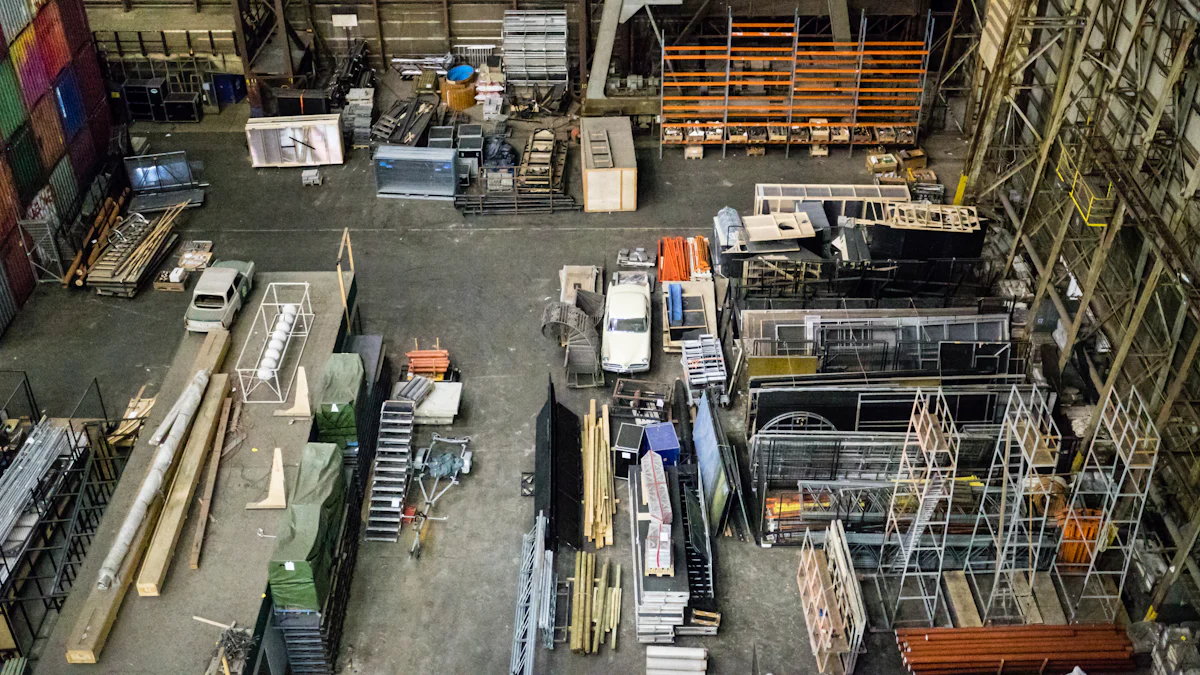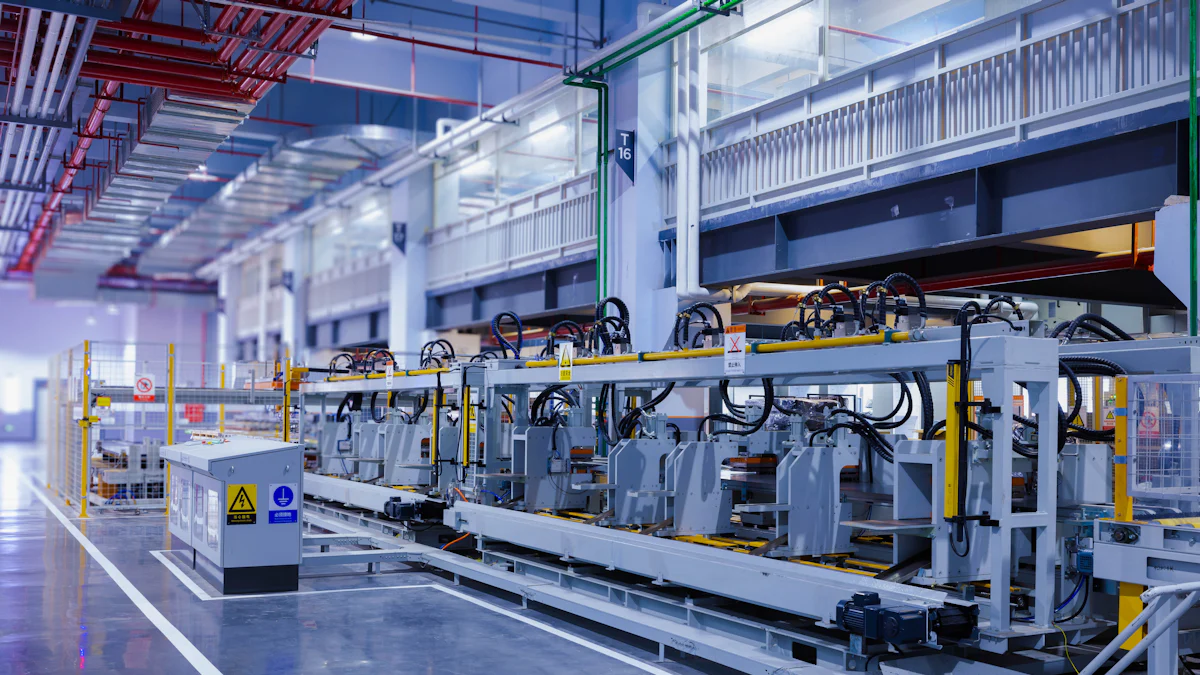
Flint lighter assembly plays a vital role in modern manufacturing. You might wonder how these small yet essential tools come together. The process involves precision and innovation. Understanding the materials, steps, and advancements in this field helps you appreciate the craftsmanship behind every lighter. This knowledge also reveals how industries strive for efficiency and sustainability.
Key Takeaways
- Flint lighters have three key parts: flint, fuel, and casing. Each part is important for it to work well.
- Getting materials in eco-friendly ways is very important. Recycling metals and plastics cuts down waste and saves resources.
- Machines and AI are changing how lighters are made. They make production quicker, better, and improve quality checks.
Materials Used in Flint Lighter Assembly

Key components: Flint, fuel, and casing
Every flint lighter relies on three essential components: the flint, the fuel, and the casing. The flint creates the spark that ignites the fuel. It is a small, durable material designed to produce consistent sparks when struck. The fuel, often butane, powers the flame. It is stored in a pressurized chamber to ensure a steady supply. The casing holds everything together. It protects the internal parts and provides a comfortable grip for users. Each part plays a critical role in the flint lighter assembly process, ensuring the lighter functions reliably.
Metals and plastics in lighter production
Metals and plastics are the backbone of lighter production. Manufacturers use metals like steel or brass for the flint wheel and other ignition components. These metals resist wear and tear, ensuring long-lasting performance. Plastics, on the other hand, are used for the casing and fuel chamber. They are lightweight, durable, and easy to mold into various designs. Combining these materials allows manufacturers to create lighters that are both functional and visually appealing.
Sourcing and sustainability of raw materials
Sourcing raw materials responsibly is vital in modern manufacturing. Many companies now prioritize sustainable practices when obtaining metals and plastics. Recycling plays a significant role in reducing the environmental impact of flint lighter assembly. Recycled metals and plastics help conserve natural resources and minimize waste. Some manufacturers also explore biodegradable materials for lighter casings. These efforts reflect the industry’s growing commitment to sustainability and eco-friendly production.
Step-by-Step Flint Lighter Assembly

Preparing the ignition system
The ignition system is the heart of any flint lighter. You start by focusing on the flint and the flint wheel. The flint, a small cylindrical piece, is placed in its designated slot. A spring-loaded mechanism holds it in place, ensuring constant contact with the wheel. When you rotate the wheel, it strikes the flint, creating sparks. This step requires precision to ensure the flint and wheel align perfectly. Without this alignment, the lighter cannot produce a reliable spark. Manufacturers often test the ignition system at this stage to confirm its functionality.
Assembling the fuel chamber and casing
The fuel chamber stores the butane that powers the flame. You begin by filling the chamber with the correct amount of fuel. Overfilling or underfilling can affect the lighter’s performance. Once the chamber is ready, it is sealed to prevent leaks. The casing is then added to protect the internal components. This outer shell is designed for durability and comfort. It also gives the lighter its unique appearance. During this step, you ensure that all parts fit snugly together, leaving no room for errors.
Final assembly and functionality testing
The final step in flint lighter assembly brings all the components together. You attach the ignition system to the fuel chamber and secure it within the casing. After assembly, the lighter undergoes rigorous testing. You check if the ignition system produces sparks and if the fuel chamber delivers a steady flame. Safety tests ensure the lighter meets industry standards. Only after passing these tests does the lighter move to packaging and distribution. This thorough process guarantees a reliable and safe product for users.
Quality Control in Flint Lighter Assembly
Inspection of raw materials
Quality control begins with inspecting the raw materials. You must ensure that the flint, metals, plastics, and fuel meet strict standards. Impurities in the flint can reduce spark efficiency. Low-quality metals may wear out quickly, and subpar plastics can compromise the casing’s durability. Manufacturers often use advanced tools like spectrometers to analyze material composition. This step ensures that only high-grade materials enter the production line.
Tip: High-quality raw materials lead to better performance and longer-lasting lighters.
Testing ignition and fuel efficiency
Testing the ignition system and fuel efficiency is crucial. You need to verify that the flint and wheel produce consistent sparks. A weak spark can make the lighter unreliable. Fuel efficiency tests check if the butane chamber delivers a steady flame without leaks. Automated machines often simulate repeated use to ensure the lighter performs well over time. These tests help identify flaws before the product reaches consumers.
Safety and compliance standards
Safety is a top priority in flint lighter assembly. You must confirm that the lighter meets industry safety standards. This includes testing for fuel leaks, flame stability, and heat resistance. Compliance with regulations ensures the product is safe for everyday use. Manufacturers also label lighters with warnings and instructions to guide users. By following these standards, you help create a product that is both reliable and safe.
Note: Adhering to safety standards protects both users and the environment.
Eco-Friendly Practices in Flint Lighter Assembly
Recycling and waste reduction
Recycling plays a key role in reducing waste during flint lighter assembly. You can find manufacturers reusing metals like steel and brass from discarded lighters. This process conserves resources and minimizes the need for mining. Plastics from old casings also get recycled into new products. By doing this, companies lower their environmental footprint. Waste reduction efforts extend to production lines as well. Advanced machinery ensures precise material usage, leaving little to no excess. When you choose lighters made by eco-conscious brands, you support these sustainable practices.
Biodegradable and reusable components
Some manufacturers now explore biodegradable materials for lighter casings. These materials break down naturally over time, reducing pollution. You might also notice reusable components in modern designs. For example, refillable fuel chambers allow you to use the same lighter multiple times. This reduces the number of disposable lighters ending up in landfills. By opting for lighters with these features, you contribute to a cleaner environment. These innovations show how the industry adapts to meet eco-friendly demands.
Sustainable manufacturing innovations
Sustainability drives innovation in flint lighter assembly. Many factories now use renewable energy sources like solar or wind power. This reduces carbon emissions during production. Water-saving techniques also play a part in making the process greener. Some companies invest in research to develop lighter materials with a smaller environmental impact. These advancements not only benefit the planet but also set new standards for the industry. When you learn about these efforts, you see how sustainability shapes the future of manufacturing.
Future Trends in Flint Lighter Assembly
Automation and AI in production
Automation is transforming how flint lighters are made. Machines now handle tasks like assembling ignition systems and filling fuel chambers. This speeds up production and reduces errors. Artificial intelligence (AI) takes it further by analyzing data to improve efficiency. For example, AI can detect defects in raw materials or finished products faster than humans. You also see robots working alongside humans on assembly lines, making the process safer and more precise. These advancements ensure that flint lighter assembly becomes faster, more reliable, and cost-effective.
Smart and rechargeable lighter features
Lighters are evolving with technology. Some modern designs include smart features like adjustable flame settings or battery indicators. Rechargeable lighters are also gaining popularity. Instead of using butane, these lighters rely on electricity to create a flame or spark. You can charge them using a USB cable, just like your phone. This makes them more eco-friendly and convenient. These innovations show how lighters are adapting to meet the needs of tech-savvy users while reducing environmental impact.
Advancements in durability and design
Durability and design are key areas of improvement in lighter production. Manufacturers now use stronger materials to make lighters last longer. Scratch-resistant casings and heat-resistant components ensure better performance over time. You also see more creative designs, from sleek metallic finishes to ergonomic shapes that fit comfortably in your hand. These advancements not only enhance functionality but also make lighters more appealing to consumers. The future of flint lighter assembly focuses on creating products that are both practical and stylish.
You now understand the intricate process behind flint lighter assembly. From sourcing materials to final testing, each step ensures quality and reliability. The industry’s focus on sustainability and innovation drives eco-friendly practices and advanced designs. As technology evolves, you can expect lighters to become smarter, more durable, and environmentally conscious.
FAQ
What makes flint lighters different from other lighters?
Flint lighters use a flint and wheel to create sparks. Other lighters, like electric ones, rely on batteries or piezoelectric ignition systems.
Tip: Flint lighters are reliable and simple to use!
How long does a flint lighter typically last?
A flint lighter can last several months, depending on usage. Refillable models extend their lifespan by allowing you to replace fuel and flints.
Are flint lighters eco-friendly?
Some flint lighters use recyclable materials and refillable designs. Choosing these options reduces waste and supports sustainable practices. Look for brands prioritizing eco-friendly manufacturing.
Note: Refillable lighters are a greener choice! ♻️


